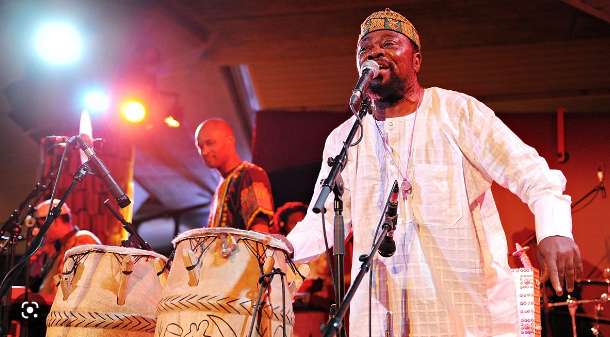Image Credit: BBC
Early in the 20th century, Ghana gave birth to the highlife music genre. It is distinguished by the blending of traditional African rhythms and melodies with Western instruments like the trumpet and guitar. Highlife music has a long history and has had a big impact on the development of the world music scene.
The Ghanaian aristocracy began hiring Western bands to perform at their parties and social gatherings in the early 20th century, which is when Highlife music first gained popularity. African rhythms and melodies would be incorporated by these bands into their performances, eventually giving rise to highlife music.
E.T. Mensah, a member of the Tempos band who started playing in the 1940s, was one of the most important and early Highlife musicians. Mensah’s music was known for its great energy and contagious rhythms, and it immediately became well-liked not only in Ghana but also in other parts of West Africa.
Throughout the 20th century, highlife music continued to develop as new musicians and bands added their own distinctive twists to the genre. Jerry Hansen and his African Rhythms band, for instance, started adding jazz and Latin elements to their Highlife music in the 1960s, developing a style that was uniquely their own.
Highlife music was very popular in West Africa, but throughout the majority of the 20th century, it was largely unknown outside of that region. Highlife didn’t start to become more well-known until the 1980s, in part because of the efforts of musicians like Fela Kuti and Hugh Masekela, who blended Highlife elements into their own music.
Highlife music is still a popular and influential genre today, carried on by musicians like Amakye Dede, Daddy Lumba, and Kojo Antwi. Afrobeat to jazz and many other genres have all been impacted by highlife.
Highlife’s capacity for change and evolution over time is one factor contributing to its enduring popularity. Highlife has always been receptive to new influences and ideas, from its early days as a combination of Western and African musical traditions to its more recent influence on other genres.
Highlife’s celebration of African culture and identity is another factor in why it remains relevant today. Traditional African music and folklore are frequently incorporated into highlife music to create a distinctive sound that is both firmly anchored in African culture and approachable to listeners all over the world.
Highlife music has come a long way since its early days in Ghana, but its place in the global music industry is secure. Whether as a source of inspiration for other genres or as a genre in its own right, Highlife music continues to be a vibrant and influential force in the world of music.

